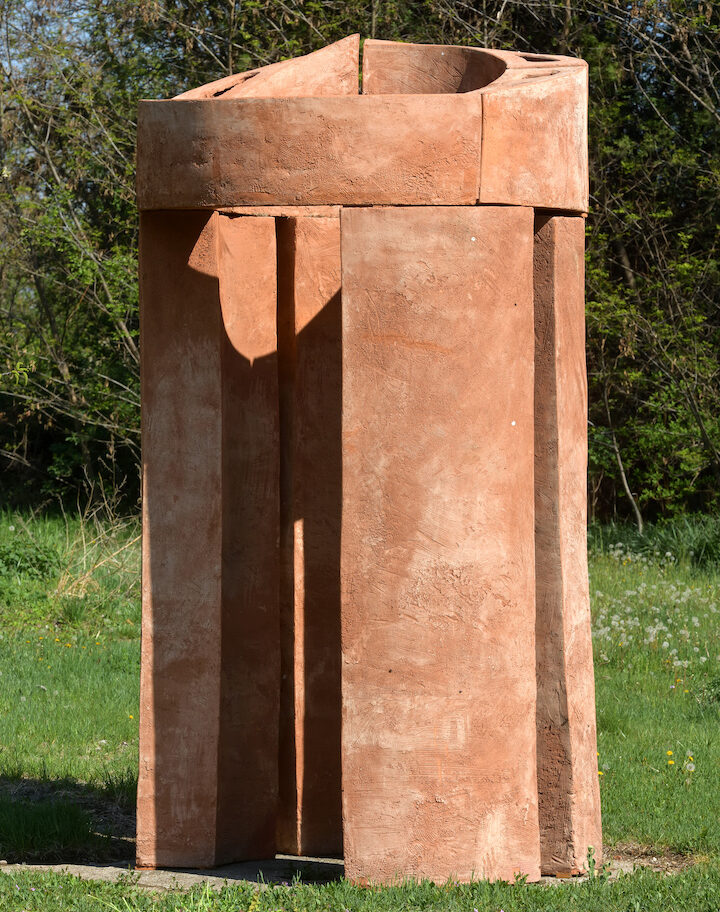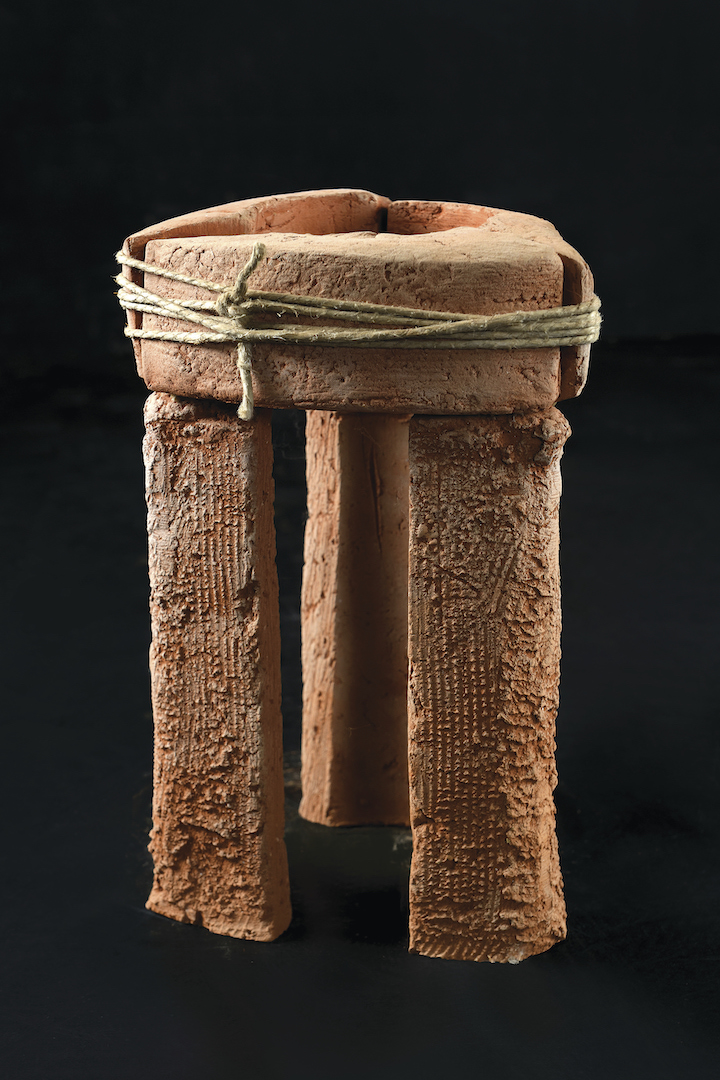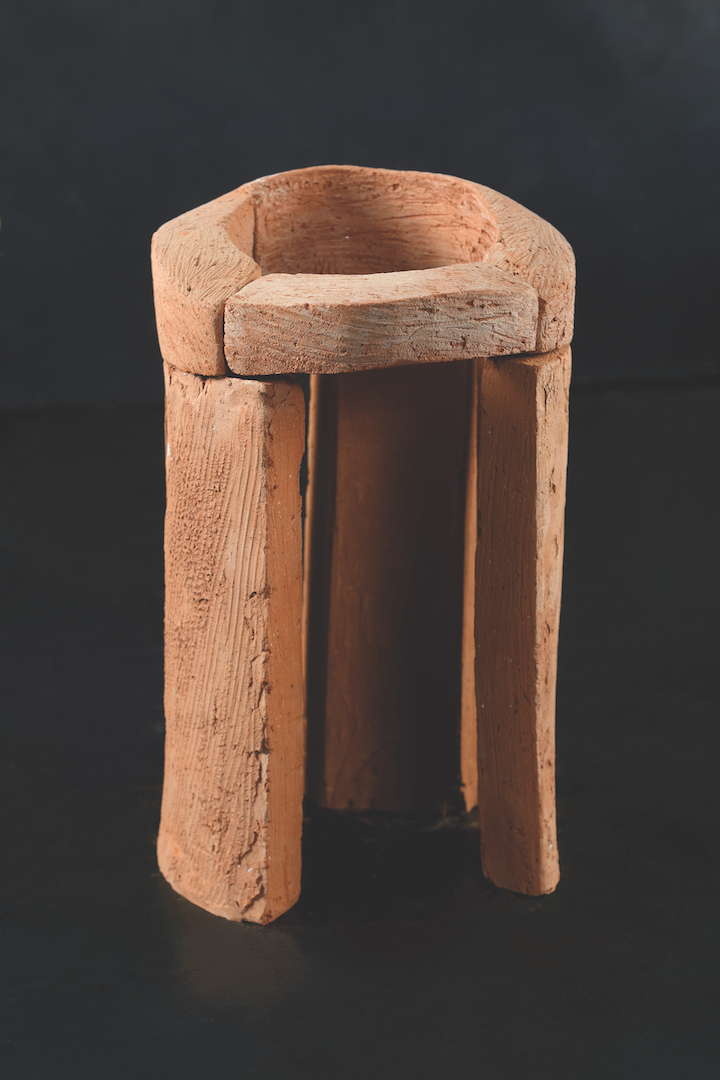About the Author
—
Igor Smiljanić was born in Kikinda in 1977, where he graduated from high school. He completed his sculpture studies at the Faculty of Fine Arts in Cetinje in 2002, and his master’s studies at the Academy of Arts in Novi Sad in 2015. He enrolled in doctoral studies at the same academy in 2015. He defended his doctoral thesis “Verticals in terracotta – the variability of the relationship between parts and the whole in large-format sculpture” in 2023, earning the title of Doctor of Arts.
He has been teaching since 2004. He gained practical experience in elementary schools in Kikinda and Ostojićevo. Since 2016, he has been working as a professional, and since 2020 as a senior professional associate at the Academy of Arts in Novi Sad (Department of Sculpture).
In parallel with these activities, he has been a long-term associate of the Center for Fine and Applied Art “Terra” in Kikinda since 2003, assistant on the Teratorija project 2008-2013. He presented his artistic work in a series of independent exhibitions, the most significant of which are:
Solo exhibitions:
Exhibition of sculptures, Terra gallery, Kikinda.
Exhibition of sculptures, Zlatno oko gallery, Novi Sad.
Exhibition of sculptures, large gallery of the student town, New Belgrade.
Master exhibition, Atelier Tera, Kikinda.
Exhibition of sculptures and drawings, Terra Gallery, Kikinda.
Exhibition of sculptures, SULUVA gallery, Novi Sad.
He exhibited as a group in the country and abroad, and the most important exhibitions are:
Exhibition within BELEFA, Belgrade.
Sculpture exhibition “Mienk itt a tér” Art Festival, Kiskunfélegyháza, Hungary.
Exhibition of sculptures Art Expo, Novi Sad.
Exhibition, Black Box Festival, Belgrade.
Site specific installation at Bjornfjell, Norway.
Performance, War Museum, Narvik, Norway.
Tera symposium exhibition, Tera gallery, Kikinda.
2019 Exhibition of sculptures in cast iron, gallery of the Academy of Arts in Banska Bistrica, R. Slovakia.
Participation in colonies and symposia:
Symposium “Tera”, Kikinda.
Sculptor colony Kopaonik, Kopaonik.
Iron casting workshop, Banska Bistrica, R. Slovakia.
Sculptor colony on Kalemegdan, Belgrade.
Exhibition and performance, “Ko-Ra” Gallery, Skopje, North Macedonia.
Exhibition, workshop and sculpture making, Punt thermal, Timisoara, Romania
About the doctoral art project
The goal of the doctoral art project Verticals in terracotta – variability of the ratio of parts and the whole in a large-format sculpture is to establish a system of building a vertical form in large-format terracotta, by building a sculpture from segments, which enables the variability of the ratio of parts and the whole, and which results in variable spatial compositions within a sculpture or sculptural setting.
With the project, I aimed to show that by composing different parts, vertical sculptural units in large-format terracotta can be obtained, using a construction system that was not in use until now. I tried to explore the possibility of applying new ways of building a vertical sculptural form, by composing parts with the help of constructive elements. Up to now, vertical forms have been made mainly as monoliths, which limited the final height of the sculpture, while previous sculptural units built from parts mostly have a horizontal orientation.
The first chapter of the written part of the doctoral art project deals with the analysis of the development of these systems and the use of construction in terracotta sculpture. In the second chapter, the variability of the relationship between parts and the whole in large-format terracotta sculpture is analyzed from different aspects. This chapter also examines the relationship of parts within individual sculptures, the relationship of the sculpture to the overall spatial setting and to the environment in which it is located. In the third chapter, the research of the space of the sculpture and the relationship between the observer and the sculpture is presented.
Other aspects of sculpture analysis include the questions considered in this project, which are related to: the interior and exterior space of the sculpture, the light in the sculpture and the art principles applied in the displayed sculptures: symmetry, order, order and balance.
Keywords: art, sculpture, terracotta, verticals, variability
About the importance and contribution of the PhD project in this field of art – large-format sculpture in terracotta
The focus of this research is a terracotta sculpture. One of the tasks within this work was to examine the possibilities of using clay as a final material in contemporary artistic practice. In its natural state, clay tends to spread horizontally and take on an amorphous form, exclusively in association with water. With this work, I gave it a geometric form – as one of the possibilities, and directed the construction of the sculptural form upwards, moving the established boundaries of the format, as well as the natural organization and direction of this material.
The doctoral art project Verticals in terracotta – variability of the relationship between parts and the whole in a large-format sculpture refers to the development of a system of building a large-format vertical form in terracotta. It is a problem that is dealt with by a small number of artists because it requires specific conditions for work. Based on five series of sculptures, I defined new construction systems, introducing the principle of building sculptures from parts.
These systems provided me with the possibility of a detailed investigation of the variability during the production of individual parts and their integration into a unique whole. By researching the construction system of terracotta sculptures, I opened up new opportunities for work and development on that front. I reduced the use of other materials, for example metal structures, to the smallest possible extent, in order to preserve the autonomy of the terracotta. On the other hand, it was precisely this minimal use of metal construction that allowed me to overcome the limitations of terracotta as a material in terms of height in some cases, and thus create a segmented sculpture characterized by specific visual dynamics.
Variability, as one of the basic principles applied in this work, visibly contributes to the current practice carried out in Atelier “Terra” in Kikinda. The possibility of change opened up space for numerous new solutions within a given problem field.
During the work on the doctoral art project, works were created that are an integral part of the unique collection of sculptures of the International Symposium “Terra” from Kikinda, created in the past forty years of continuous existence. In this way, they can represent a training ground for the further development of the sculptor’s artistic and educational practice, which is carried out in this studio.
Contact us
Center for Fine and Applied Arts Terra
-
Trg srpskih dobrovoljaca 25, 23300 Kikinda, Serbia


